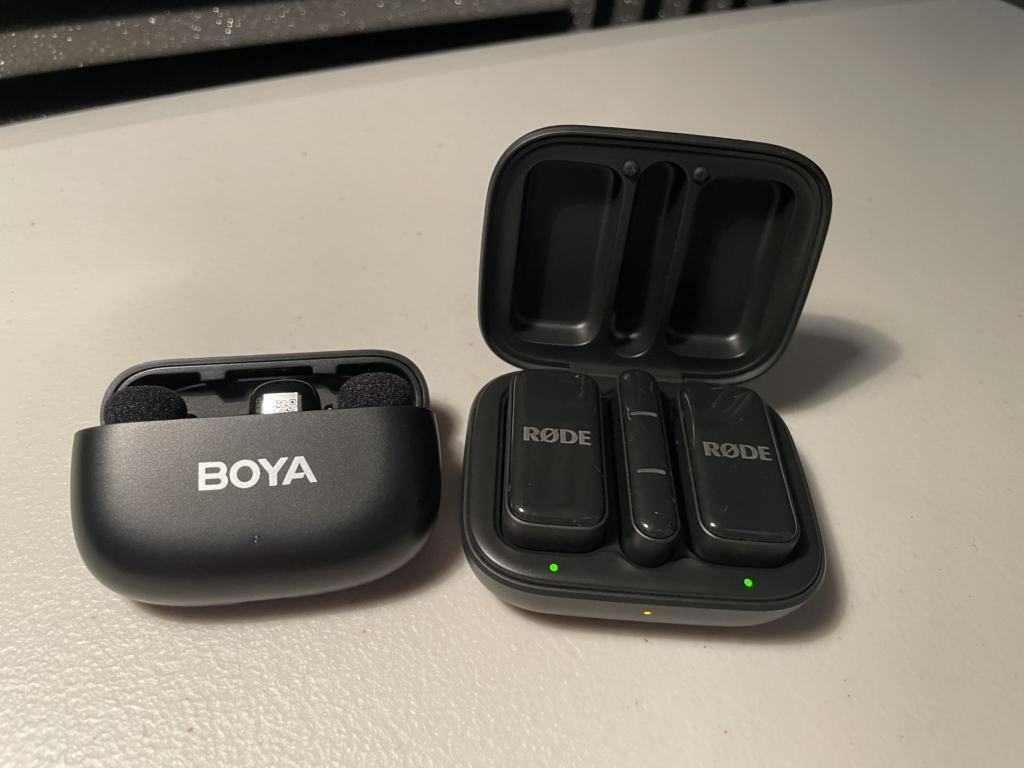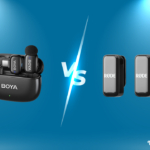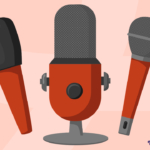Simple Setups for Recording In-Person, On-Location Podcast Interviews
While it’s never been easier to record remote interviews, face-to-face chat is still one of the best ways to really get to know someone. When you’re recording in person, it’s much easier to pick up on cues, avoid talking over one another, and better tease out individual stories and personal experiences.
And, that’s not to mention the fact that you don’t need to rely on internet connections, as well as your guest’s environment and equipment (and knowledge of how to best use it!).
Sure, recording in person comes with its own potential issues and obstacles. But these can be minimised by opting for the simplest kit possible.
In this article, I’m going to cover one of the easiest but best ways to record an interview in the field, really concentrating on a balance of cost, simplicity, and quality. Jump straight to it, if you just want the recommendation.
If, on the other hand, you are looking for the best quality premium interview kit you can get, then be sure to check out my Gold Standard In-Person Podcast Interview Equipment series here.
Recording On-Location vs Studio or Online
First off, a quick qualification of what we’re talking about here. There are three main places where you might record an interview:
- Online, recording remotely
- In your standard studio, recording in person
- Out in the field, recording in person
If it’s the online recording you need help with most right now, then check out the best tools on the market for recording remote conversations.
If it’s a studio setup you’re after, take a look at our ultimate guide to podcast equipment and sound treatment.
If it’s the on-location setup you’re most interested in, though, then that’s what we’ll cover right here.
Recording on the move requires a few particular things.
- Light and portable – you need to be able to carry this kit around, so no bulky mixers, heavy microphones and unwieldy stands.
- Noise isolation – you might well be recording in a noisy environment, so you need to be able to get the mic up close to the speakers’ mouths.
- Simplicity – this needs to be point-and-shoot. You won’t have the space or the time to spend 10 minutes setting everything up and testing it to see if it works.
- Quality – just because we’re on the run doesn’t mean we’ll put up with bad-quality audio. It needs to work!
Luckily, there’s a great setup that meets all of these criteria, and it’s not even very expensive!
The Best Equipment Setup for Recording In-Person
Let’s get straight into it – here’s what you need to record a great in-person interview.
- A recorder – either your smartphone or a dedicated digital recorder
- Two Lavalier microphones
Let’s look at these in turn – the why and the what.
The Microphones – Lavalier or Lapel Mics
The most important part is the mic – this captures your voice and turns it digital, after all.
No doubt, if you’re already podcasting, you’ll have a decent microphone at home. The issue is that most mics are big, bulky, sometimes fragile and usually in need of a stand.
Lavalier (also known as lapel) microphones are the ones you see clipped to a speaker’s shirt buttons or collar. They’re tiny mics that sit about 6 inches below your mouth and do surprisingly well at isolating your voice.
Lapel microphones definitely fit our needs for being light and portable. They’re no bulkier than a little set of earbuds or AirPods.
They’re also good for our second requirement: noise isolation. Because they sit so close to your mouth, you’ll be much louder than the background noise. You’ll get a bit of the background for the atmosphere and ambience, but you’ll still be nice and clear to the listener. And so will your guest!
What Lavalier Microphone Should I Buy?
Time for some actual recommendations, then. Just a quick heads up that we use a few affiliate links here, which help support all our free content, though never at any extra cost to yourself.
Lavaliers have long been used by on-the-go podcasters. In the past few years, we’ve seen them evolve from cabled to wireless models, too.
Wireless options are handier overall – no annoying tangled cables or mic splitter requirements – though you do need to remember to keep them charged.
Simplest On-Location Smartphone Setup
If you’re recording with your phone, there are two great options at different price points: The Rode Wireless Micro and the BOYA Mini.

Both of these kits are very similar. They are made up of two mics (transmitters) that easily and discreetly attach to your clothing. Then, there’s a receiver, which plugs into your smartphone. You can buy a version of each for either Android (USB-C) or iOS (Lightning).
The Rode Wireless Micro is the premium option here. Rode is one of the best in the business when it comes to recording pristine audio, and this is another great addition to their stable.
The Rode Wireless Micro costs about $140, so it isn’t cheap, but it is most definitely brilliant value for what you get, what it does, and how it sounds.
The BOYA Mini is a worthy alternative if you’re on a tight budget. It might lack some of the bells and whistles of the Micro (like the magnetic clips on the mics) and have a couple of questionable settings (‘AI Voice Change’), but it will give you a really solid sound quality for the price point.
Both of these super-handy little kits can be set up and recording in less than a minute. If you want to record into your smartphone to do on-the-go recordings or video podcasts, just choose one of these and you’ll be golden!

BOYA Mini Vs Rode Wireless Micro: Smartphone Audio Made Easy
Read article called: BOYA Mini Vs Rode Wireless Micro: Smartphone Audio Made EasySimple Digital Recorder Setups
Not everyone wants to record with their phone. If that’s you, then a digital recorder is a great portable option instead.
Good digital recorders don’t cost the earth, and they make up a pretty useful part of a larger podcasting kit setup anyway, so it’s often worth having one for other reasons, too.
Digital recorders let you plug in external mics, but they also come with their own built-in mics. So you could get by with a digital recorder and nothing else.
On that question, why not use the internal microphone on your digital recorder? Well, because that defies the law of noise isolation. A digital recorder sitting on the table between you is miles away from you and your guest. Having a mic each is much better, drastically improving your audio quality.
A few digital recorders have multiple XLR inputs, but then we’re venturing into the more premium and complicated Gold Standard Interview kit, which I’ve covered in this separate guide.
So, if you wanted a simple digital recorder setup, I’d look at something like the Zoom H1n or Tascam DR-05X, two lavalier mics (like the Rode Lavalier Go), and a splitter to connect them both to your recorder via the recorder’s 3.5mm jack.
However, costs can quickly add up, here (you could be talking about $200 to build this kit), and though this is a straightforward setup, it might not exactly seem “simple” to a complete beginner. So, are there any alternatives?
The Rode Interview PRO: Best Non-Smartphone In-Person Setup
Our pals at Rode come up trumps again here with the Rode Interview PRO. This is a handheld mic with onboard recording, so it’s basically a microphone-shaped digital recorder. And, being a handheld, it’s optimised to minimise handling noise being picked up in your recordings, too.
Of course, sharing a mic with your guest or co-host isn’t without its issues. You see handhelds being pointed back and forth in 1-2 minute interviews after a big football match, but could you record an hour-long episode this way?
With that said, this is really as simple an in-person setup as it gets. Just switch the mic on, point, and talk. If you have any other Rode wireless kit, you can also set it up to record wirelessly, too. But the onboard recordings should serve you just fine, in all honesty.
The Rode Interview PRO costs about $245. See our review of the Rode Interview PRO for the full lowdown.
Simple Setups for In-Person Recordings
In conclusion, then, if you’re recording with your phone, opt for the BOYA Mini or Rode Wireless Micro. And, if you see yourself as the roving reporter type, consider the Rode Interview PRO, instead.
If you need more help, support, or guidance when it comes to podcast tech, or any other aspect of podcasting and content creation, then be sure to join us in the Podcraft Academy. We have in-depth courses, tutorials, downloadable resources and checklists, along with accountability and feedback tools, too. It’s a brilliant place to nurture and grow your show!
